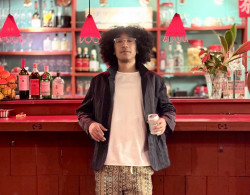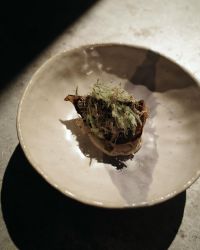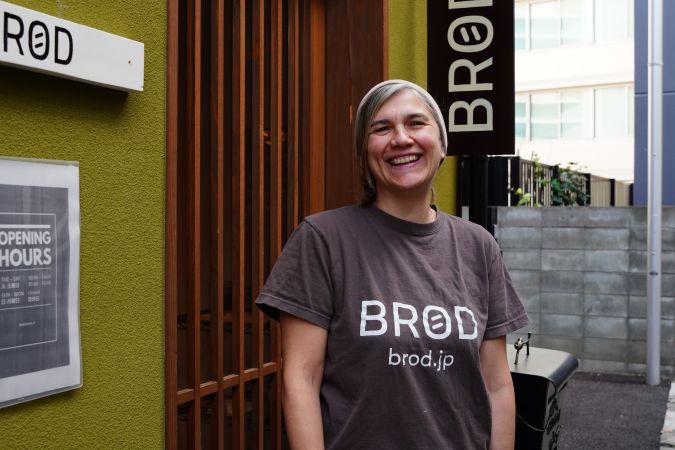
April 18, 2023
Based in Japan: Kristina Ganea
The rising trend of sourdough in the city
From crunching numbers in Denmark to making crusty loaves in Tokyo, Kristina is living out her second career in a way she never expected: owning a 100% sourdough bakery in Hiroo, Shibuya-ku. The lifecycle of sourdough is something you have to nurture daily, from feeding the starter to controlling the proofing temperature and everything in between. But when done right, the result is something delicious and nutritious, which is exactly what Brød aims for. In the organic green and brown hues of the renovated soba spot that is Brød bakery, we were welcomed by the intoxicating smell of fresh-baked sourdough. There, in between shaping scones and pulling fresh bread from the oven, we spoke to Ganea about her baking journey.
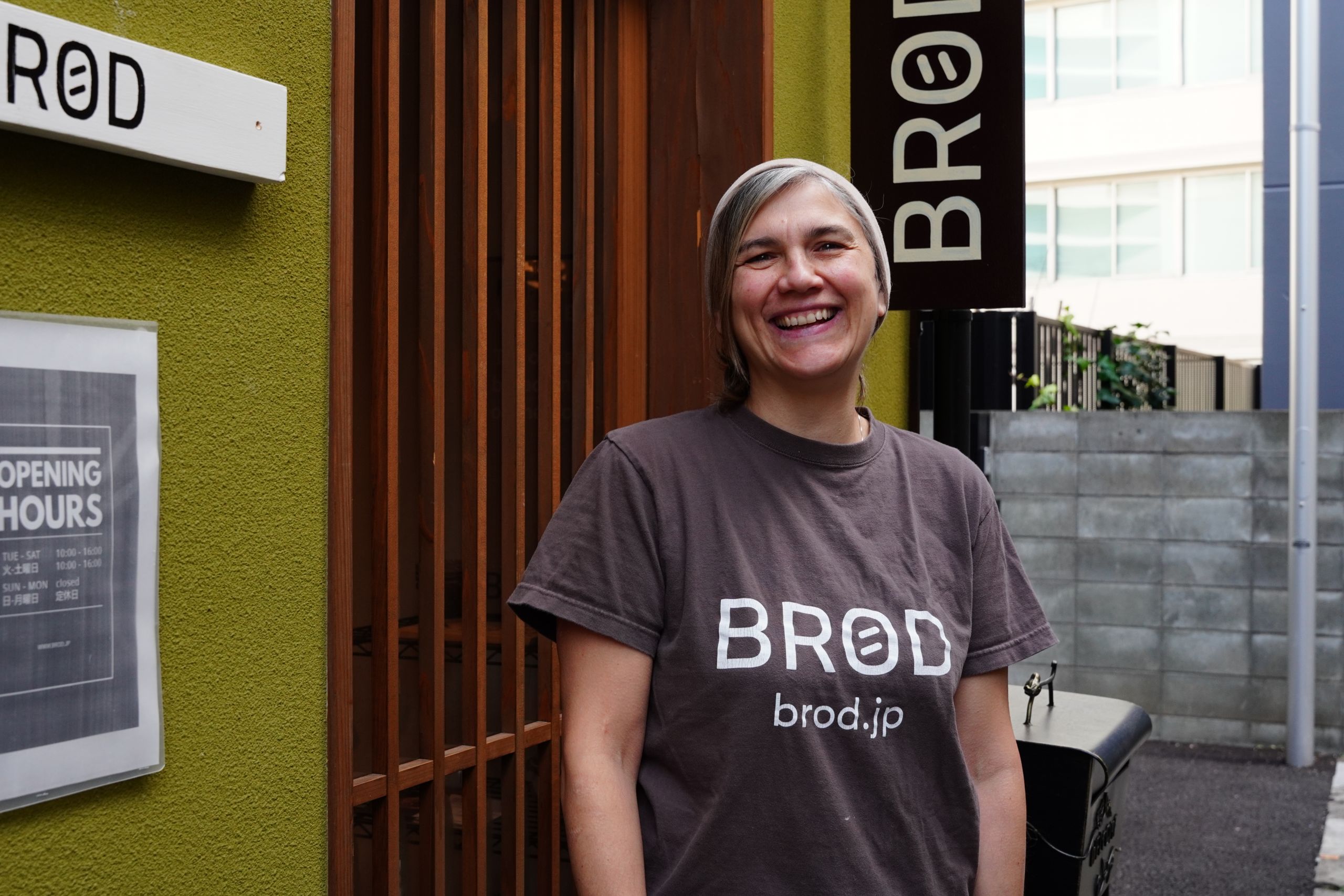
Metropolis: What made you start baking sourdough?
Kristina Ganea: Baking found me, not the other way around! We moved to Japan five years ago because of Henrik, my husband’s, work. I was at home taking care of everything, and we needed to make lunch for our daughter every day. We figured out that her system couldn’t take the white bread here, so I started doing some research, and it seemed that she probably didn’t have a gluten intolerance, but that there was something else her system couldn’t tolerate.
So I looked into sourdough, which pre-ferments gluten and makes it more acceptable to the body, and has enhanced nutrition, and she was OK! I started baking and experimenting at home a lot. I had a totally different world of work before that. Coming from the financial industry, I did a lot of research. I figured that sourdough is just as unpredictable and needs a lot of research, and has so many unknown variables. That was exactly what I used to do but just in a different manner. Baking has become my second career.
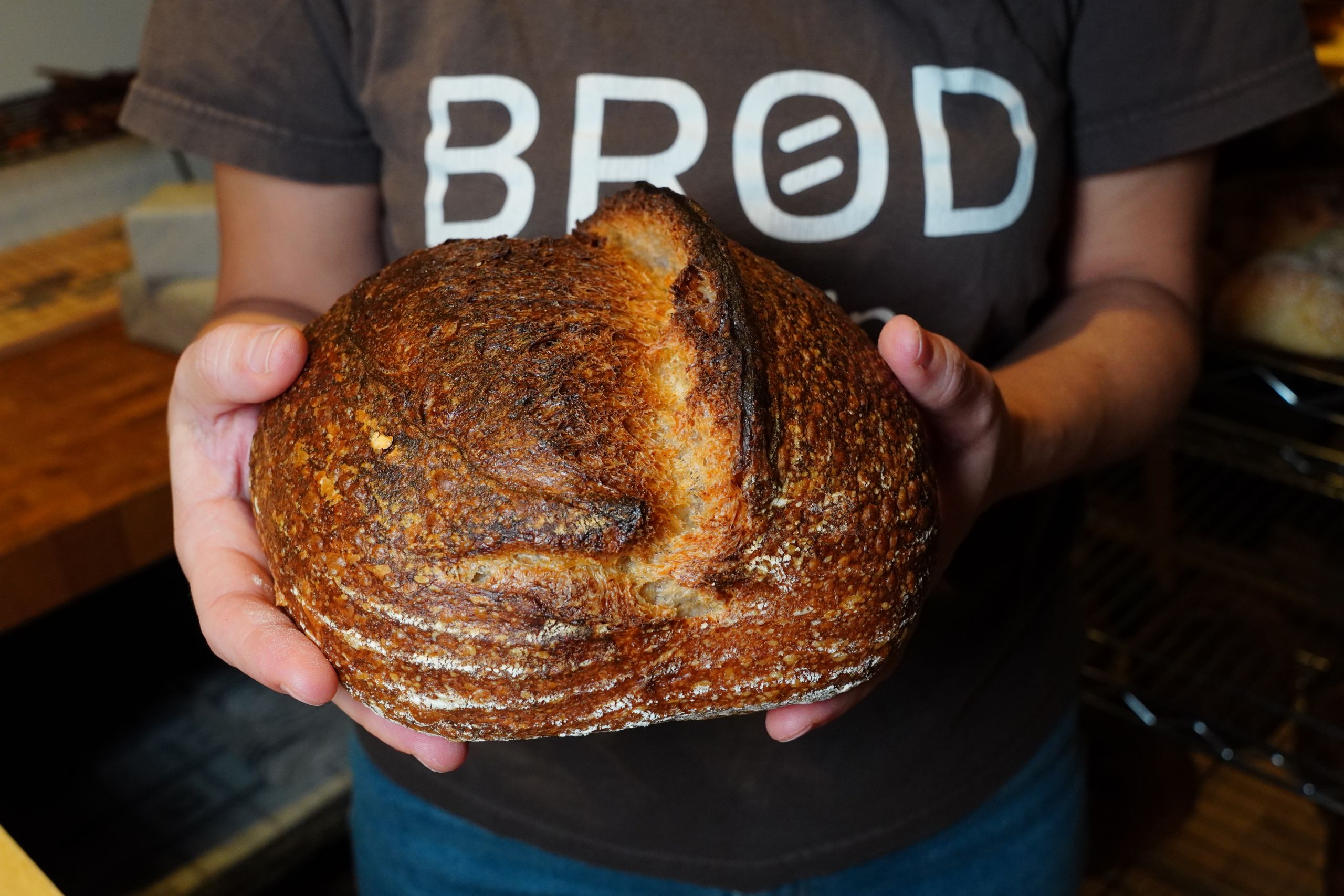
M: How did you end up opening a 100% sourdough bakery?
KG: It started because I was baking bread and I really liked it. I was making too much so I gave it away to my friends. They started asking if I could make some for their dinner parties, and eventually my husband said “Maybe you should start charging for this…”
So I started the whole thing with a friend. Her name is Miya, and she always wanted to have a coffee shop. I told her about my baking and said we should do something together. That’s how the idea started, but somehow it turned into a bakery.
She grew up in Germany so she understands European bread. She helped a lot in the beginning, researching flours, suppliers and that kind of thing. Without her, all of this would not exist.
M: Tell me about the life cycle of your Nordic sourdough.
KG: We have two starters in the bakery. One is 100% rye based, and the other is wheat. I started them when I began baking, about four years ago. They traveled with me to Denmark and back, because you have to watch them. We feed them every day. It moves in a cycle because you keep a little bit of the original one every day. You feed it, it gets bigger, and you take it apart again. Sourdough is wild yeast in the sense that it absorbs from the air, and from the flour and everything around us. We don’t use commercial yeast at all.

M: How does all that affect your routine?
KG: We feed the starter during the day, and then I come and feed it at 10pm so that it’s ready for the morning. During the day, we use it up so we leave just a little bit, but the next morning we need 5-10kg of starter. It’s hard to make 10kg out of a small starter, so we feed it once to increase it to about 1/3 of what we need, and then feed it one more time to get it to the size that we need the next day.
M: Your website mentions local ingredients. To what extent does that go?
KG: We use local ingredients wherever possible. There is a bit of a trade-off between local and imported flour. The number one trade-off is organic, because you cannot get that many local flours that are organic. Also, the quality of the protein in the flour and the characteristics of the gluten are different in European and Japanese flour for making hard, crusty bread like we do, which has a lot of air and very high hydration levels. You can still do it, it’s just a different taste and texture. Right now, the base flour in some of our bread is American, but then the wholegrain flour that we use comes from Kyushu. This one here is Tanaka Flour [gesturing to the sack of flour decorating the front of the shop]. It’s organic, stonemilled, and local. We really like it. It’s great quality in terms of proteins as well. We use it as much as we can in different breads.
M: Your social media mentions health and sustainability. What steps do you take to achieve that, and how do you keep waste down?
KG: For health, it’s basically about putting as much whole grain and as many seeds and nutrients into the bread as we can. In terms of waste, if we have anything leftover we try to make croutons and rusks, and things like that. If we still have bread left over, which doesn’t happen very often, we donate it to a church that helps those in need.
We try to use as little plastic packaging as possible. We use paper bags, but for the supermarket, they require a little plastic window so customers can see inside. We’re working on a design with a company called “No Issue” so we can transition away from some of these bags.
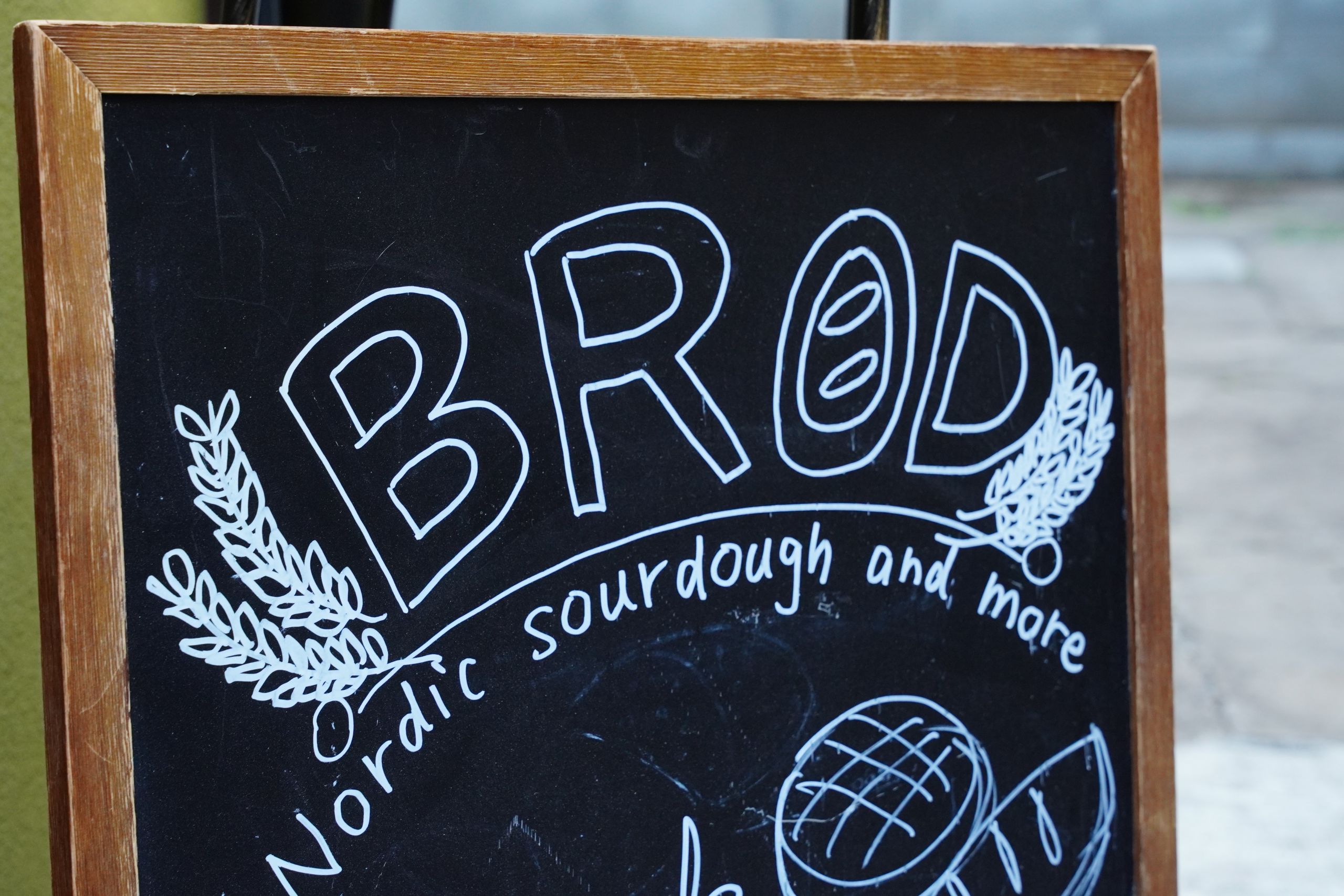
M: I see you have a few vegan items. What inspired you to make these?
KG: Sourdough is usually vegan. It’s flour, water and salt; that’s it! It just depends on whether you add anything to it. Except for our cookies, everything is vegan. For our two types of cookies, we use normal butter. We use sourdough in everything, so we’ll be baking some scones later which are also sourdough. Our cinnamon buns are also sourdough-based and vegan, so we use plant-based butter which is actually from Denmark. None of us are vegan so to speak, but we thought that having things plant-based is maybe a step towards being kinder to nature.
M: Do you get much positive feedback about the sustainable aspects of your work?
KG: We get a lot of engagement on that topic at the farmer’s market, because the market is based on those principles. Some customers do ask about it, but I don’t think it’s a prevailing theme in Japan. The question here is more about local vs. imported in Japan, in terms of flour especially, because I think there were some scandals with imported flour around 20 years ago. But in terms of sustainability, I don’t think we are at the same level as we would be in Europe. For example, if you take Scandinavia, it’s very much at the forefront of the movement. So, there’s a bit to catch up on [laughs]. But we’re also trying to promote that in a sense, because we do collaborations with organic and smaller farmers. We try to find local farmers who can grow things organically in Japan, like spelt, purple wheat and such. We have a farm growing purple wheat for us in an organic manner. We’re looking forward to the summer to see the outcome of the crop.
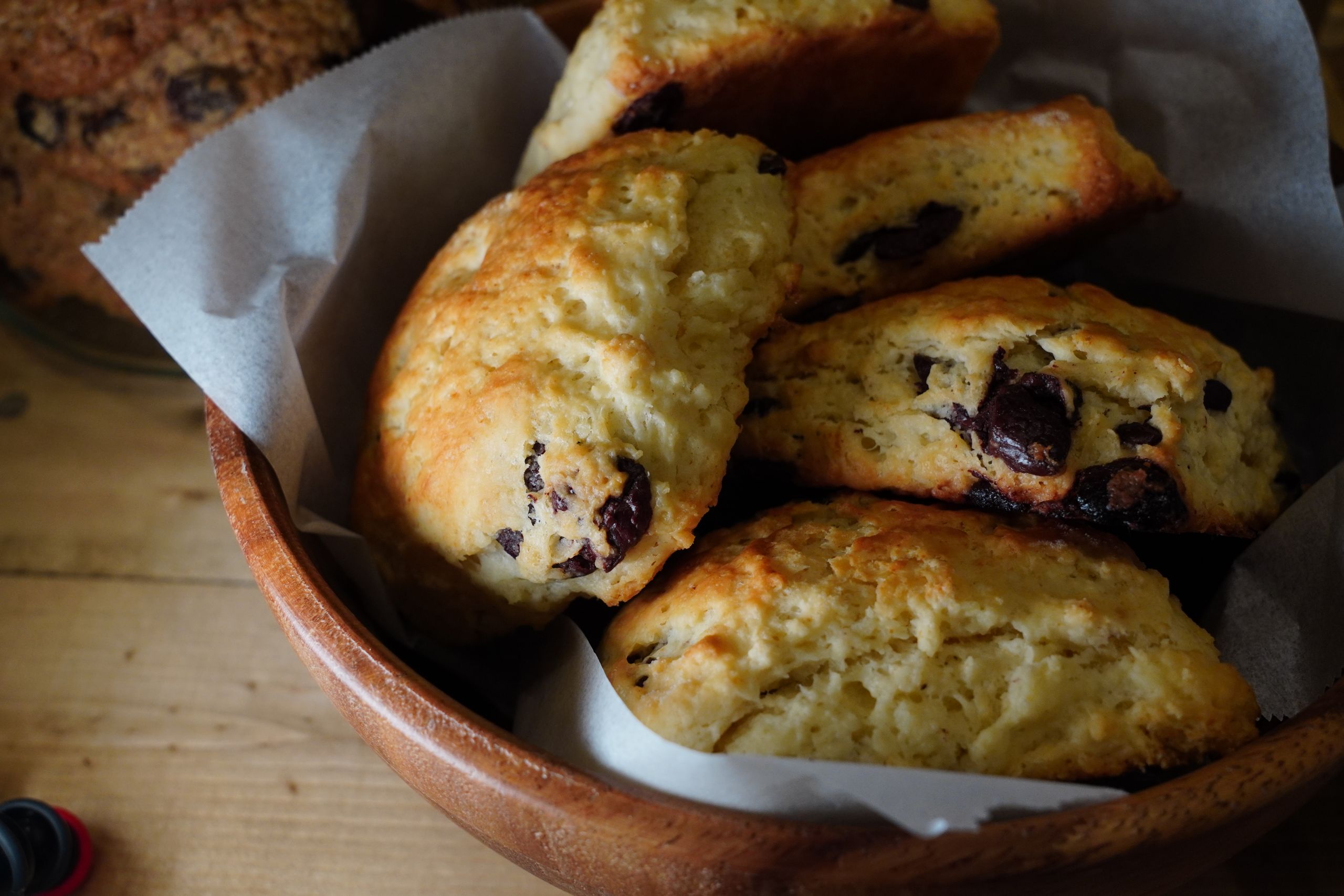
M: Do you think that sourdough could take off in Japan? I see you’ve already started selling at National Azabu.
KG: I think so. I think we are just in the infancy of that process. It’s just the first baby steps. I hear that there are more sourdough bakeries opening, and there are a lot of people who take courses on how to make sourdough. We’ve had a lot of customers and friends asking about those kinds of courses, so we’ll have some in the summer. Where do you get inspiration for your new menu items We follow a lot of Nordic bakeries, ones from Copenhagen. Generally, the sourdough world is quite big outside Japan, so it’s a good source of inspiration.
Henrik Bertelsen (co-owner): One of the pioneers for sourdough baking and Nordic-style bread is a man called Claus Meyer. He’s also one of the founders of Noma. He basically built a bread empire with a farm-to-table and plant-based philosophy. I bought his book called “Everybody Can Learn to Make Sourdough” [Meyers bageskole. Alle kan lære at bage], and I started from there. My self-study school was with his recipes. That was my greatest inspiration.
M: Do you ever take inspiration from Japanese cuisine?
KG: Not so much Japanese recipes, but Japanese processes and ingredients. We have a country-style bread made with sesame, for example. Fermentation like sourdough is everywhere in Japan, such as miso, natto and cold fermentation. So I think it pairs really well. We have an idea to combine Danish rye bread with miso, but we haven’t had the time to experiment yet, as we’ve just moved into this new place. Summer is usually our experimenting time, because it’s quieter. I book one week where we just experiment. We don’t do any production or sales, we just experiment to figure out what’s next.

